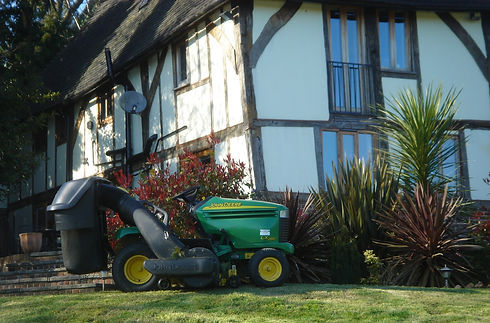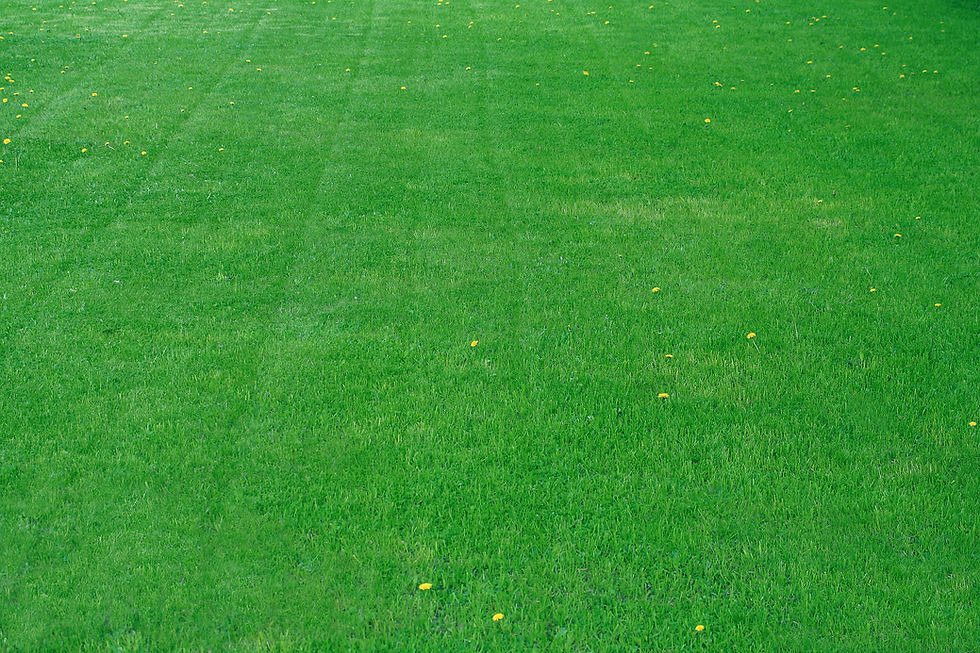
Domestic Lawn Specialists
Do You want ...
-
a great looking Lawn?
-
a weed and moss free lawn?
-
a disease free lawn?
-
a worm cast free lawn?
-
a level lawn?
-
a lush lawn?
Lawn Specialists in Sussex and Kent
If the answer to any of the above is "Yes" - City Escapes can provide your lawn with the solutions. City Escapes offer lawn care in all areas of Sussex including Heathfield, Crowborough, Uckfield, Lewes, East Grinstead, Eastbourne, Hastings, Brighton, Crawley and East Grinstead. In Kent we cover all the main areas including Maidstone, Sevenoaks, Tonbridge and Tunbridge Wells.
City Escapes Lawn Care Plan
The biggest problem with "lawns" is that many of us just mow it periodically and then usually with a rotary mower. The best lawns will nearly always be cut with a cylinder mower. A cylinder type mower will cut far shorter than any current rotary type mower.
Coarser leafed grasses and weeds benefit from the higher cut of a rotary mower to the detriment of finer leafed grasses.
Flower beds are regularly weeded and fed. The same should be applied to a lawn. Flower beds are regularly forked through to improve uptake of water, nutrients and air - yes, plants "breathe" too. Aeration is the lawn equivalent.
Listed below is the range of services offerred. Annually, the first three should be undertaken.
We offer the following services:
-
Weed control
-
Feeding
-
Moss control
-
Disease control
-
Scarification
-
Aeration
-
Hollow tining
-
Worm cast control
-
Vertidraining
-
Topdressing
-
Overseeding

City Escapes Lawn Maintenance - Lawn Care Plan Stages


Weed control
Even a newly laid lawn will gradually overtime become weed infested with a diverse range of species from perhaps Yarrow to Daisy, Clover to Dandelion. These will either have been in the underlying soil or blown in on the wind. Therefore, to maintain your turf in "as bought weed free" condition at least an annual dose of selective weed killer is required. However, no one chemical will control the full spectrum of weeds. Alternate between two chemicals containing different Active Ingredients.
Do not apply selective herbicides when the lawn is under stress. In all likelyhood the grass will also be killed. Always follow the instructions on the label.
If you use a Contractor, for your safety as well as that of the lawn, ensure they hold the relevant formal certification to apply pesticides.

Feeding
By cutting and collecting grass clippings a valuable nutrient source is in fact being removed.
Therefore, gradually the soil reduces in fertility. To maintain and enhance a lawn annual feeding should be undertaken. In summer use a feed with a higher Nitrogen content to produce a lush green growth whilst in winter use a formulation with a low Nitrogen content.


Moss Control
Moss is indicative of poor drainage through either compaction or as a result of the underlying soil. If you garden on clay moss is likely to be a problem. Moss will eventually outcompete the grasses forming your lawn.
Eradication is unlikely on a clay soil. In most cases good levels of control are achieved with only two annual applications - between October and April. Applications should be made in light of the weather.
Here we have a heavily infected Wadhurst lawn-once a grass tennis court. The treated moss is black. The lighter green stripe is the result of a blocked nozzle!!! This area, naturally was treated. All the dead material will be raked out by scarification.

Disease control
Often disease sets in as a result of low fertility or incorrect soil pH. Disease can also become evident once snow has melted. The most common diease we treat is "Red Thread". Small brown patches appear which on closer inspection contain pink thread like strands. These are the mycelium. If left untreated it is likely the small brown patches will "meet up" if the weather conditions remain favourable - damp.
In appearance the grass looks dead though in reality only the leaves are. An application of contact fungicide should resolve the situation allowing new growth to establish.
This Tenterden lawn was newly laid by others only 6 months before. Probably, the worst infected lawn in 23 years. The cause is primarily poor underlying soil. Sadly, this was bought in "soil". A soil test confirmed defieciencies and remedial action was taken involving the applications of Sulphur. The owner previously spread fertiliser on the lawn which in turn highlighted the problems faced by the novice gardener.

Scarification
Scarification is the process of "combing" through the grass and into the soil surface. The process helps the removal of thatch, dead weeds and moss but also severes tillering grasses promoting stronger growth. Thatch is essentially dead bits of grass that can form an impermeable mass. Such a build up reduces the intake of water, nutrients and air into the soil.
This Sussex lawn of some 2000 Sqm has received little attention, other than mowing, over a decade.
Here, we used a scarifier pulled by a compact tractor to remove thatch. After only one pass a considerable amount of material buried within the grass can now be collected.


